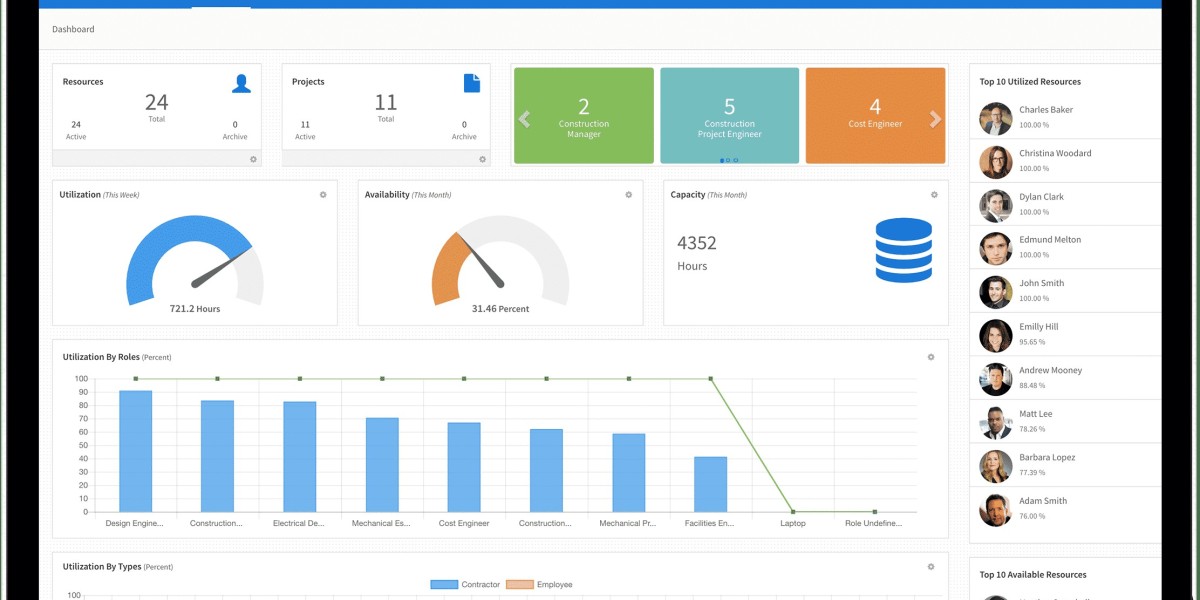Effective resource management is critical for the success of any organization. A resource planning tool helps businesses efficiently allocate and manage resources such as manpower, equipment, and finances to ensure that projects run smoothly. These tools streamline project workflows, optimize team performance, and prevent resource bottlenecks, ensuring that deadlines are met without overspending.
What is a Resource Planning Tool?
A resource planning tool is software that assists organizations in assigning the right resources to the right tasks at the right time. It provides visibility into resource availability, workload distribution, and project timelines. These tools help project managers make data-driven decisions, balancing workloads across teams and avoiding resource overutilization or underutilization.
Why is Resource Planning Important?
Improved Efficiency – Streamlining workflows reduces downtime and maximizes productivity.
Cost Optimization – Prevents over-allocation of resources and minimizes project expenses.
Better Collaboration – Facilitates better communication between departments and teams.
Enhanced Decision-Making – Provides real-time data to make informed project decisions.
Project Delivery on Time – Helps identify bottlenecks early, preventing delays.
Key Features of a Resource Planning Tool
Resource Allocation and Scheduling
Assign tasks to the most suitable team members based on skill sets and availability.
Balance workload to avoid resource fatigue or inefficiency.
Real-Time Resource Tracking
Monitor the progress and utilization of resources across different projects.
Identify gaps or overlaps in project timelines.
Project Forecasting and Budgeting
Estimate future resource requirements based on ongoing projects.
Prevent resource shortages or budget overruns by maintaining control over project costs.
Time Tracking and Reporting
Measure the time spent on each task to ensure project milestones are met.
Generate comprehensive reports to evaluate team performance and resource utilization.
Collaboration and Communication Tools
Enable seamless communication between project managers, team members, and clients.
Share project timelines and updates to ensure everyone is aligned.
Types of Resource Planning Tools
Enterprise Resource Planning (ERP) Tools
Integrates various business processes, including finance, HR, and supply chain.
Examples: SAP, Oracle ERP, and Microsoft Dynamics.
Project Management Tools with Resource Planning
Ideal for task management, time tracking, and resource allocation.
Examples: Asana, Trello, and Monday.com.
Dedicated Resource Management Tools
Focuses exclusively on optimizing resource usage and managing workloads.
Examples: Resource Guru, Float, and Mavenlink.
Top 5 Resource Planning Tools in 2025
Microsoft Project
Comprehensive project management and resource planning tool.
Ideal for large organizations and enterprises.
Monday.com
User-friendly interface with robust task management and resource tracking.
Best for small to medium-sized businesses.
Smartsheet
Combines spreadsheet functionality with advanced project management features.
Offers automation and real-time collaboration.
Resource Guru
Focused on resource scheduling and workload management.
Great for agencies and service-based organizations.
Float
Provides a visual interface for managing team workloads.
Perfect for creative teams and project-based companies.
How to Choose the Right Resource Planning Tool?
Evaluate Business Needs – Identify the specific challenges your organization faces.
Scalability – Ensure the tool can grow with your business.
Integration Capabilities – Check if the tool integrates with existing software.
User-Friendliness – Opt for intuitive interfaces that are easy for teams to adopt.
Budget Considerations – Balance features with cost to maximize ROI.
Conclusion
A resource planning tool is an essential component of modern project management. It helps organizations optimize resource allocation, ensure smooth project delivery, and maintain cost efficiency. By choosing the right tool, businesses can effectively manage workloads, streamline processes, and improve overall performance. Whether you’re a small business or a large enterprise, adopting a robust resource planning solution can significantly enhance your operational efficiency.







